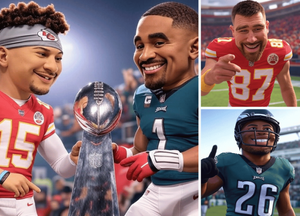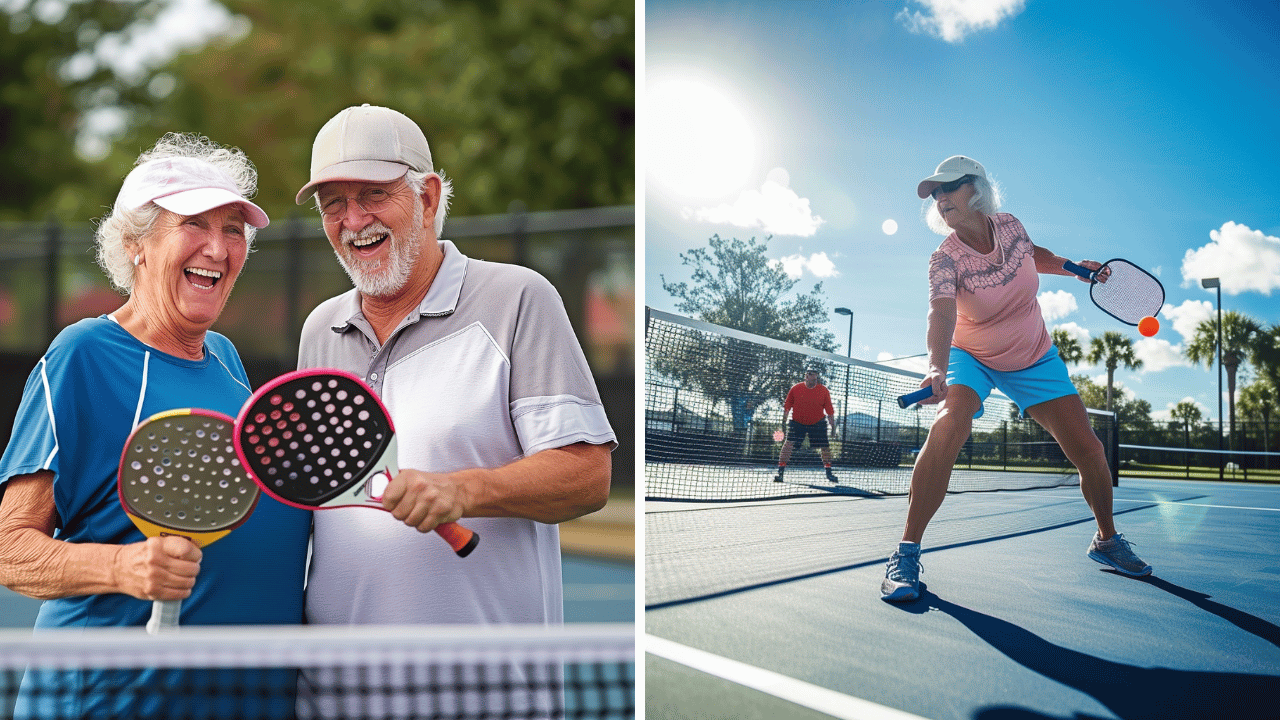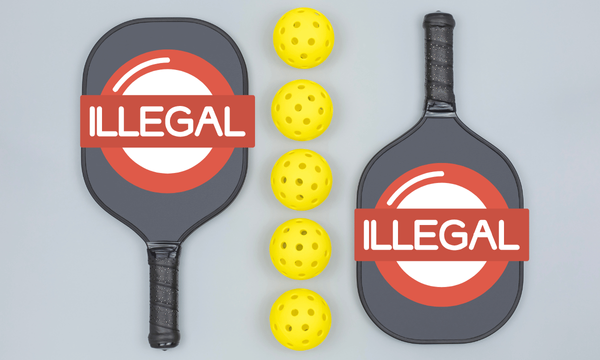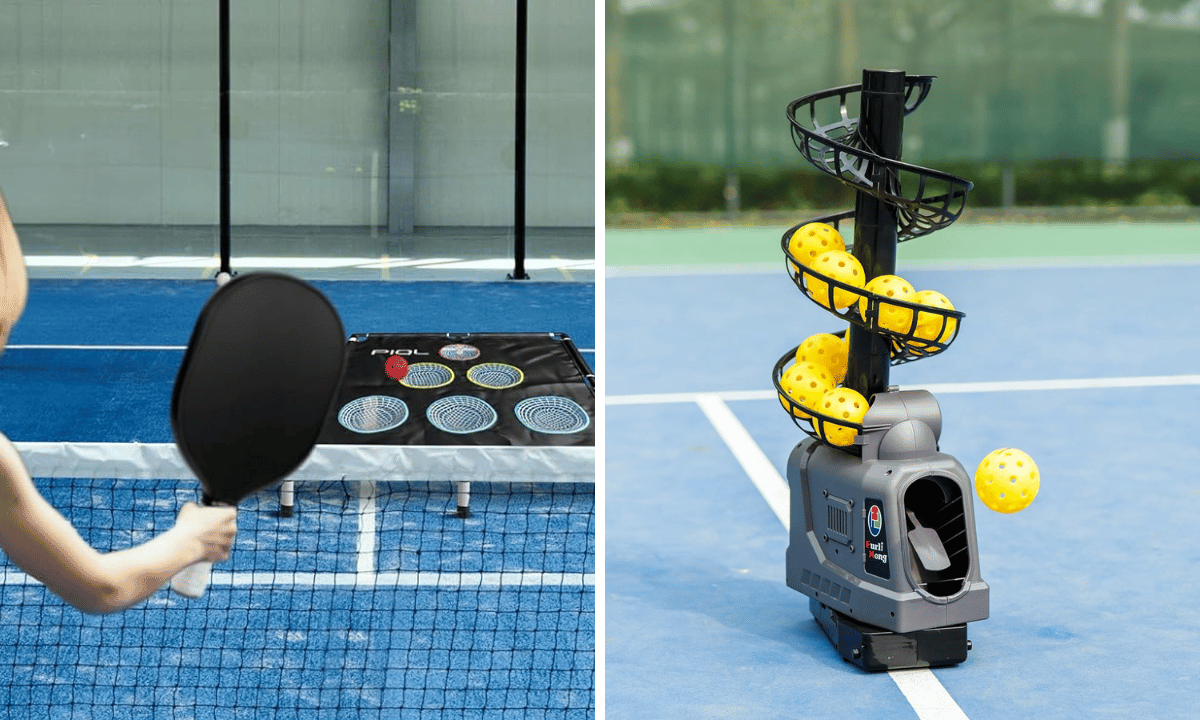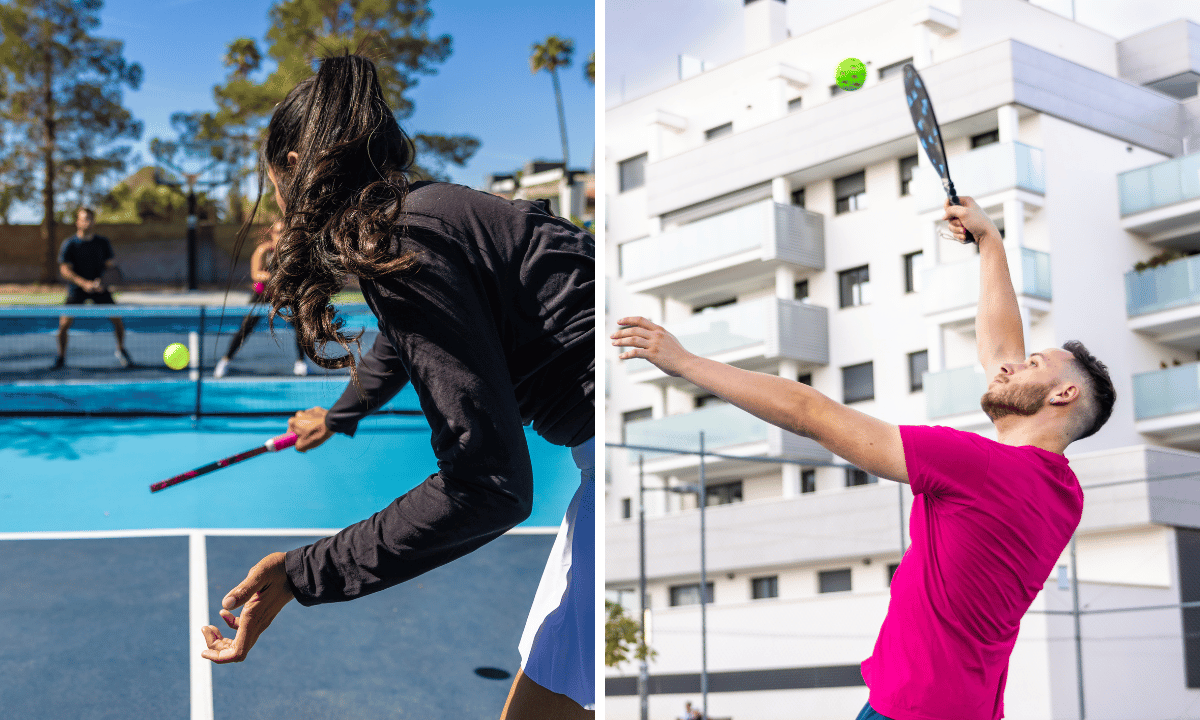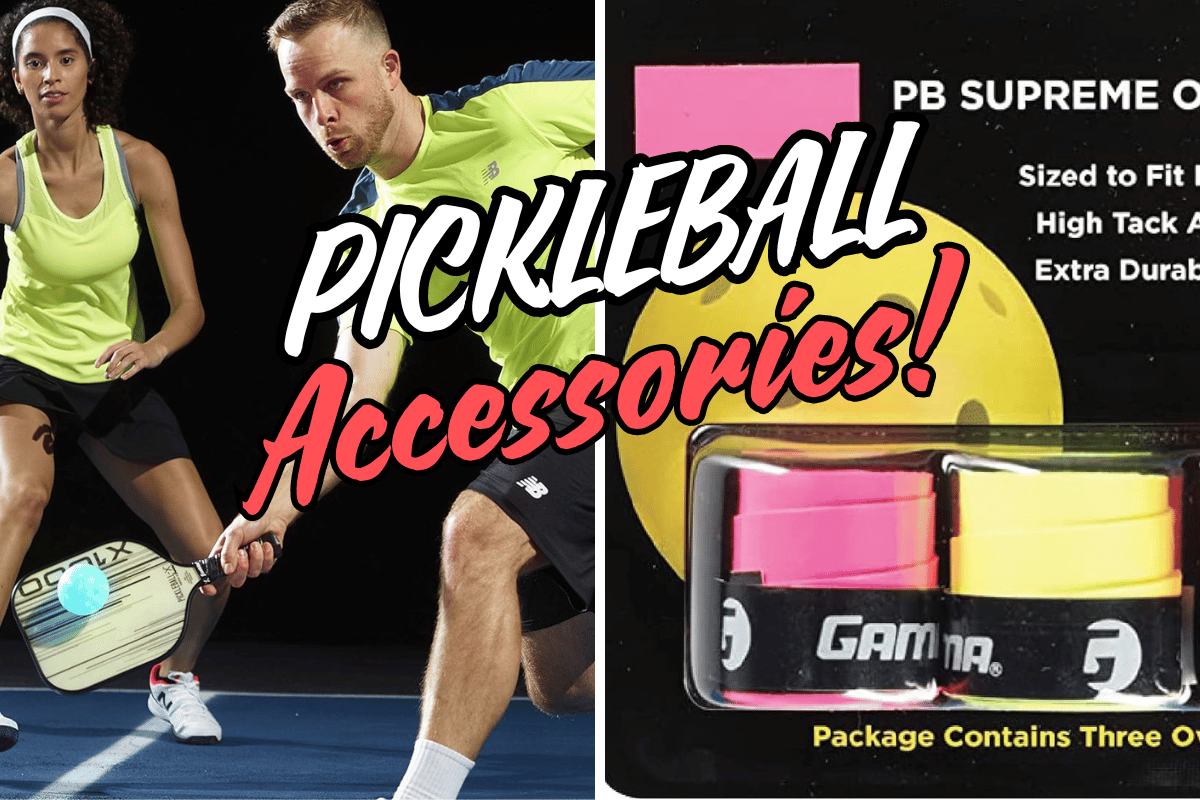If you're an avid player or just starting with pickleball, then you're probably already aware of how crucial it is to abide by the rules and regulations. Understanding the rules when you play pickleball increases the chance of playing more skillfully and avoiding any unnecessary penalties.
However, with the various nuances and regulations surrounding this game, it can be challenging to remember the specifics. In this comprehensive guide, we will discuss the essential rules of pickleball, and basic gameplay, and provide some tips to help you improve your game.
Table of Contents:
1. Introduction to Pickleball
2. The Basic Court and Equipment
3. Serve and Serve Return Rules
4. Scoring System
5. Faults and Let Rules
6. No-Volley Zone and Volley Rules
7. Double Bounce Rule
8. Doubles and Singles Play Rules
9. Strategies and Tips for Beginners
10. Conclusion & Next Steps
What is Pickleball?
First of all, let's talk about the basics of this exciting game. Pickleball is a racket sport incorporating elements of tennis, badminton, and table tennis. It is primarily played in doubles but can be played in singles as well. Players serve the pickleball underhand, and the game is played until one team accumulates 11 points, and wins by two.
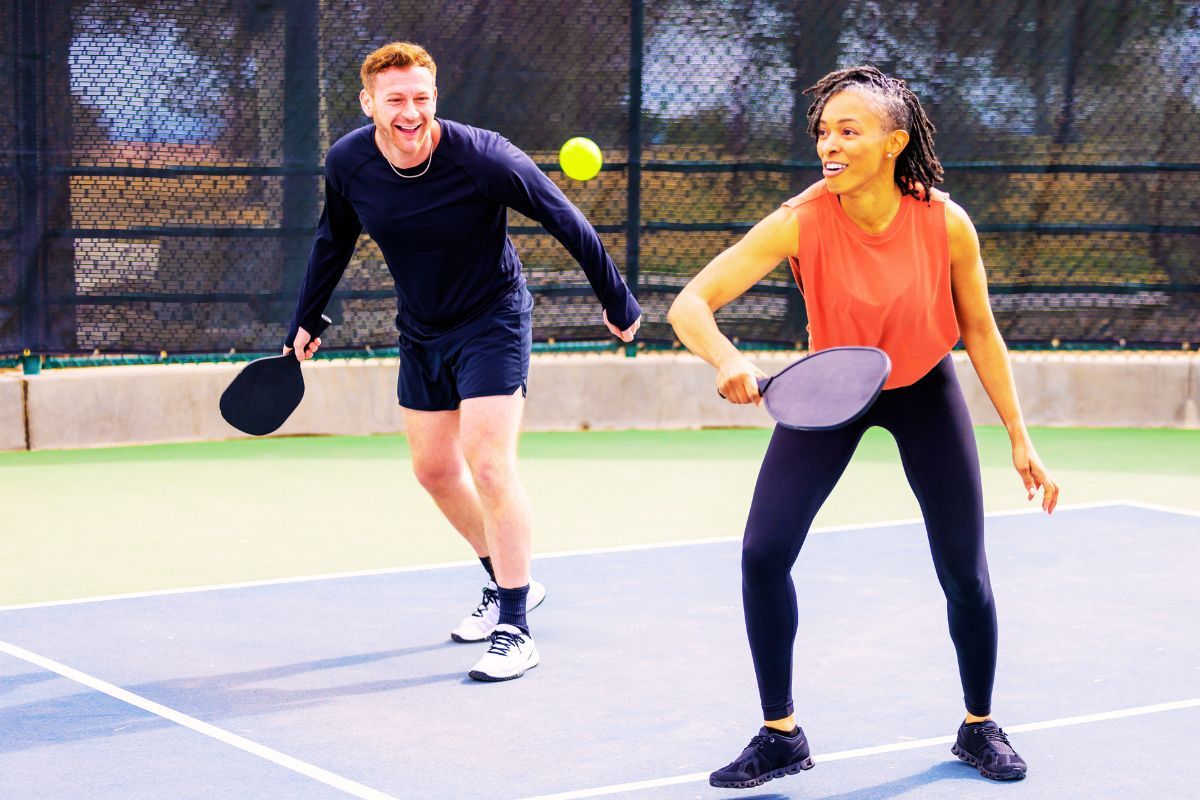
The Basic Court and Equipment
Pickleball is a racquet sport played on a court with dimensions of 20 feet by 44 feet. The court is divided by a center net to create two equal-sized court areas. The net is 36 inches high at the center and 34 inches high at the sidelines
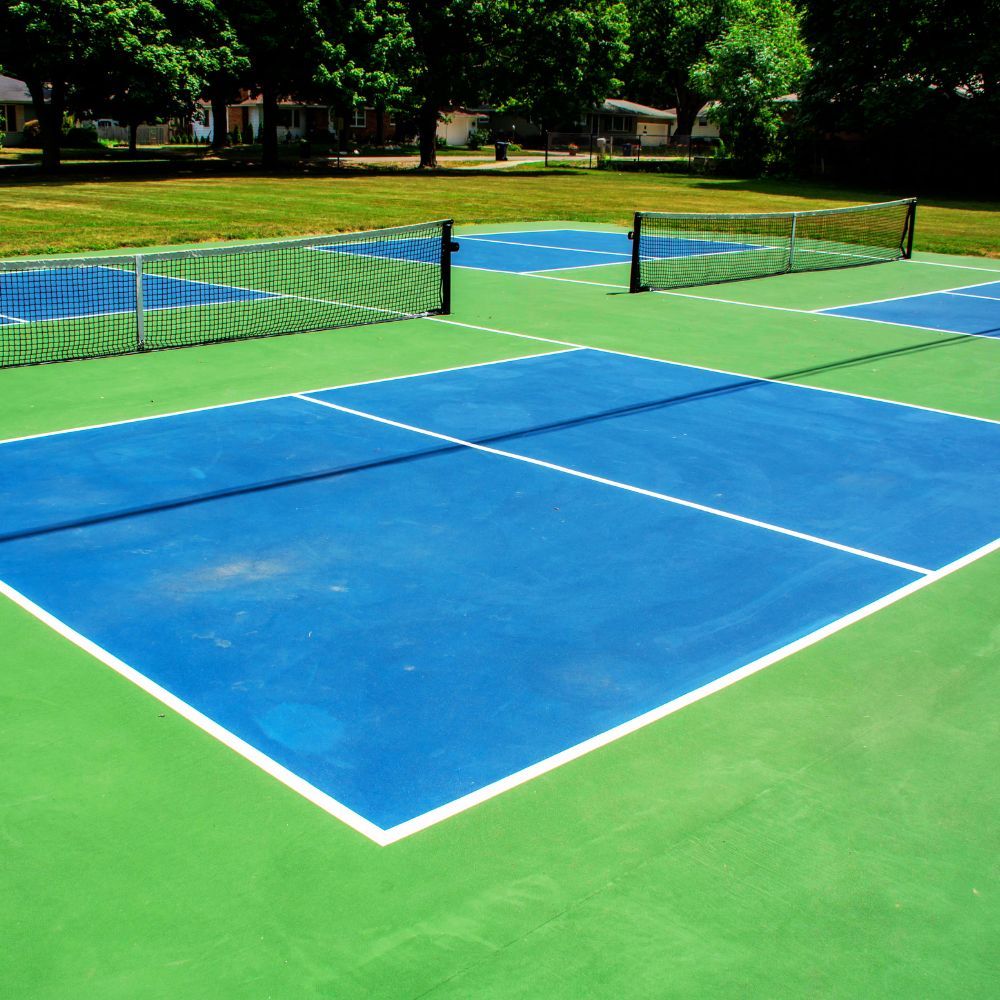
The court also has a non-volley zone or "kitchen," which is a 7-foot-deep area on both sides of the net, where players are not allowed to hit the ball before it bounces. The non-volley zone is marked by a line that extends 2 feet from the net.
As for the equipment, players use lightweight paddles made of wood or composite materials to hit a perforated plastic ball, also known as a pickleball. The ball has a diameter of 2.87 inches and weighs around 0.88 ounces.
The Serve and Serve Rules
When serving, the player must keep at least one foot behind the baseline. The paddle must be below the waist, and the server's arm must be swung in an underhand motion. When the server serves, the ball must cross the non-volley zone line and land inside the receiver's service area. After the first serve, points are rewarded on each successful serve thereafter.
Scoring System
Understanding how to score in Pickleball is significant knowledge for any player. The game is played in sets, only the serving team can win a point. Winning a point during the opponent's serve results in a side-out, and the team's order of serving gets reversed. The team that secures 11 points and leads by two wins the game.
Faults and Let Rules
As with any sport, pickleball has specific rules that players must follow. In pickleball, a fault occurs when a player makes an illegal or incorrect shot, such as hitting the ball out of bounds or into the net. When a fault happens, the opposing team earns a point.
Some examples of faults in pickleball include stepping into the non-volley zone (or "kitchen") to hit a ball that is bouncing or on its way down, touching the net with a paddle or body, or hitting a ball before it bounces on the server's side of the court.
Let rules, on the other hand, refer to situations when a point must be replayed (or "let"), usually due to outside interference such as a ball or object rolling on the court during play. Additionally, if a serve clips the top of the net but still lands in the correct service area, it is considered a let serve and does not count as a fault.
The No-Volley Zone and Volley Rules
The No-Volley Zone, also known as the kitchen, is a seven-foot area on both sides of the net where players are not allowed to hit the ball while standing inside the zone. The only time a player can hit the ball while standing in the zone is if the ball bounces first outside of the zone.
As for the Volley Rules, players are allowed to hit the ball in the air without letting it bounce on their side of the court, but there are certain conditions. Firstly, the ball must be hit outside of the No-Volley Zone. Secondly, the player must not touch or cross over the No-Volley Zone line while hitting the ball. Lastly, the player's momentum must not carry them into the zone after hitting the ball.
Double Bounce Rule
The double-bounce (or two-bounce rule) is an essential rule of pickleball to keep in mind. It is crucial to the game as it allows for volley play near the net while preventing players from hogging the frontcourt.
The double-bounce rule states that a player returning the ball must allow a bounce before attempting a volley. This crucial rule ensures that all rallies start with a minimum of one bounce for both teams.
Doubles and Singles Play Rules
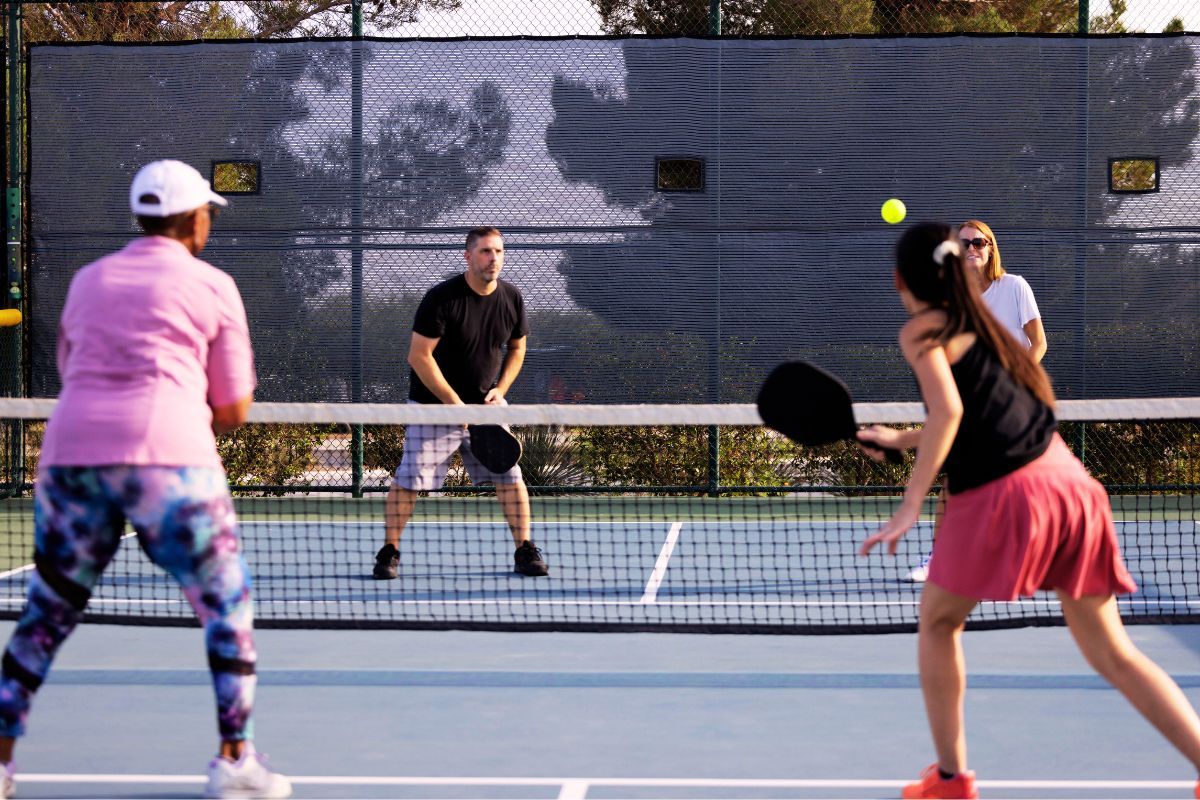
For doubles play, each team member has two players on the court. The serve is always underhand and must be made from behind the baseline. The serve must land in the opponent's service court diagonal to the server, also known as the crosscourt serve.
The receiver must let the ball bounce once before returning it, and then the server's team must also let it bounce once before returning it. After that, the ball can either be volleyed or allowed to bounce before being returned. A point is awarded to the serving team if the receiving team faults or fails to return the ball properly.
As for singles play, it follows similar rules to doubles play, but with only one player per side of the court. The serve must still be made from behind the baseline, and the ball must still land in the crosscourt service court.
The receiver must again let the ball bounce once before returning it, and the server's team must also let it bounce once before returning it. Once the ball is in play, it can be returned by either volleying or allowing it to bounce.
Regardless of whether you're playing singles or doubles, there are certain areas of the court that are off-limits. These are known as the non-volley zones or the kitchen, and they're located on both sides of the net.
Players must not enter this area to hit a volley, though they are permitted to step in and hit the ball after it has bounced in the kitchen.
Remember that in both singles and doubles, players must always make an effort to avoid contact with other players. If a player does make contact, it's considered a fault and the point goes to the other team. Additionally, players must follow the code of sportsmanship and good conduct throughout the game.
pickleball rules 101
Strategies and Tips for Beginners
Pickleball, being a relatively new sport, has been gaining popularity over the recent years. If you're a beginner looking to improve your gameplay, here are some strategies and tips that might help you:
1. Focus on your serve:
In pickleball, the serve is a crucial shot that sets the tone for the rest of the game. Focus on mastering your serve and try different techniques to see which one works best for you.
2. Play smart, not hard:
Pickleball is a game of finesse, not power. Instead of trying to hit the ball as hard as you can, focus on placing it in the right spot to make it difficult for your opponent.
3. Communicate with your partner:
As pickleball is a doubles sport, communication with your partner is key. Make sure you both have a clear understanding of each other's strengths and weaknesses and develop a strategy accordingly.
4. Stay in position:
When playing, make sure you're always in the right position on the court to make your shots effective. Don't rush to the net without ensuring that you're in the right spot to make your next move.
5. Practice, practice, practice:
Finally, practice makes perfect. Keep playing, learning new techniques, and developing good habits to improve your gameplay.
By implementing these strategies and tips, beginners can take their pickleball skills to the next level and enjoy this exciting sport to the fullest.
Sources: USA Pickleball, Pickleball Experts
Conclusion & Next Steps
Pickleball is an exhilarating game that can provide a lot of enjoyment once you get to grips with the rules and regulations. The essential rules discussed in this comprehensive guide are just the tip of the iceberg when maximizing your pickleball playing experience
So take these notes into consideration, practice them with the tips provided in this guide, and, most importantly, have fun with this fantastic sport!
For more related content, check out Joola Rackets, essential pickleball gear, and pickleball shoes.
Your Pickleball Guru,
Ray



